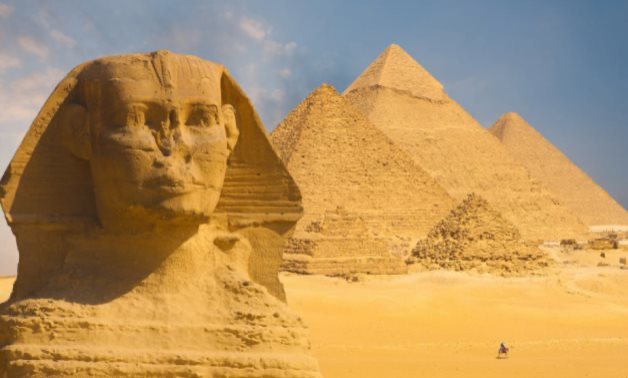One of the wonders of ancient Egyptian civilization is the Great Sphinx statue, which was unveiled in Cairo on November 10, 2022.
The magnificent statue is still standing today after countless years. It is considered a testimony of the greatness of the ancient Egyptians, the development of their ideas and abilities that led them to construct this masterpiece.
However, many people do not know who the Sphinx is and whether or not it is the embodiment of a human personality who lived during the era of the ancient Egyptians.
The majority of academics hold that the Sphinx dates to the Fourth Dynasty and that King Khafre’s reign is when it first appeared.
Others contend that it was erected by Djedefre, Khafre’s elder brother, to honour their deceased father Khufu [Cheops], whose Giza pyramid is known as the Great Pyramid of Cheops due to its enormous size. According to proponents of this theory, Khufu rather than Khafre is more recognisably depicted on the Great Sphinx’s visage. This observation has also given rise to the theory that Khufu personally constructed the statue.
Over time, the Sphinx’s shape has undergone a significant change.
Various attempts have been made to preserve the statue since ancient times, most likely starting during the reign of Thutmose IV (1400-1390 B.C. ), when the body is most vulnerable to wear. The nose is conspicuously absent from the face, which has also sustained trauma.
Some claim that Napoleon’s soldiers shot the Sphinx’s nose with a cannon, causing the damage. However, pictures from before Napoleon’s time show that the Sphinx lacked a nose.
According to Encyclopedia Britannica, another theory holds that the Sufi Mohammad Saem al-Dahr defaced the statue in the 14th century to protest idolatry.
The Sphinx was designed to resemble a mythical animal with a lion’s body and a human head. It stands for a significant figure in Greek and Egyptian mythology and art.
Greek grammarians created the word sphinx from the verb sphingein, but the etymology has nothing to do with myth.
The ancient Greek author Hesiod called him Phix.
One of the biggest statues in the world, the Great Sphinx measures 73 metres in width and 20 metres in length.
The Great Sphinx’s enigma

